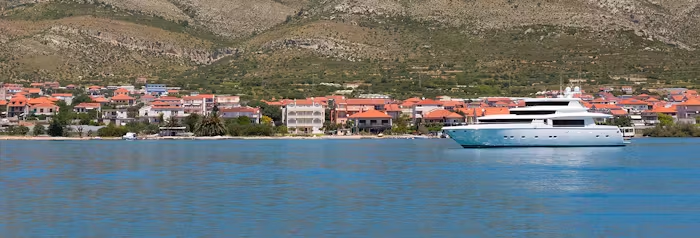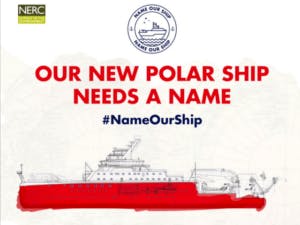
BOATERS BLOG
Meet “Boaty McBoatface” the tentative name for the next generation of polar research vessel.
Back in April of 2014 The Chancellor announced that the UK Government would fund a new $287 million polar research ship to study climate and ocean in both Antarctica and the Arctic. The Natural Environment Research Council (NERC) proposed a design and build of the new vessel which will deliver “world-leading capability for UK research.

After asking the public to decide upon a name for the vessel, the name Boaty McBoatface has taken storm on the internet leading the voting polls with 27,000 votes, while the second place pick trails with around 3,000 votes. Alison Robinson, a spokeswoman from the research council said in an email that the group was “delighted by the enthusiasm and creativity” of the names. “We are pleased that people are embracing the idea in a spirit of fun” Robinson said.
Lord West told BBC that the NERC only expected “marine research fans” to get involved in the name picking. “I’m rather proud that we have silly names going around, but I hope we don’t select one.” West explained further.
The 15,000- tone, 128m long vessel is currently being built at Cammell Laird on Merseyside. Built with on-board laboratories the new ship will contain remote controlled instruments, which can safely open up extreme polar environments to research. Robotic vehicles, helping to pave the way for development of new UK industries. And Sophisticated underwater environmental monitoring systems, used to provide underpinning data for research.
Technical Factfile:
- Length of approximately 125m and a breadth of approximately 24m;
- Draft of approximately 7m;
- Scientific cargo volume of approximately 900 cu metres;
- Endurance for up to 60 days (Polar Regions)
- Range 19,000nm at 13 knots transit;
- Ice breaking capability – up to 1m thick at 3 knts
- Helicopter capable;
- Ability to launch and recover aerial and ocean robotic systems;
- Crew compliment will be approximately 30;
- Up to 60 scientists and support staff will be accommodated on-board
The ship will be equipped with the latest technologies to conduct research cruises. These are likely to be ADCP:
- Swath Bathymetry Shallow & Deep;
- Sub-Bottom Profiler;
- Scientific Echo Sounder;
- Biological Multi-frequency and Multi-beam Echo Sounder;
- Biological Multi Beam Sonar; Omni-directional Sonar;
- USBL;
- Positioning &Telemetry;
- Net Monitoring;
- Meteorological Weather Station
Scientific features:
- 60 days ship endurance;
- Incorporation of a helideck and hangar for the use of two small helicopters to assist with the deployment of airborne scientific instruments and scientific field parties;
- Reconfigurable laboratory space to meet evolving science needs over the lifetime of the vessel, with docking stations for containerised laboratories;
- Enhanced science winching capability and a scientific moon-pool for the flexible and reliable deployment and retrieval of scientific equipment such as remotely operated vehicles and autonomous underwater vehicles;
- Capability to deploy, operate and control large numbers of remotely piloted science instruments at the same time (i.e. both airborne and marine remotely operated vehicles and autonomous platforms);
- Enhanced satellite communications to meet the increasing requirement for real time transfer of data to/from the UK and end users (including operational forecasting);
- Sophisticated underwater environmental monitoring systems